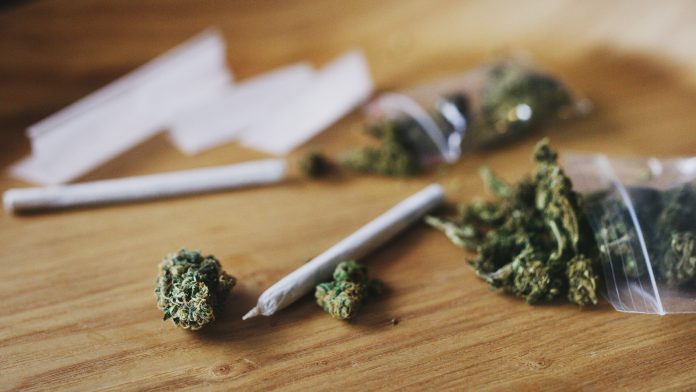
A new study has found that repetitive transcranial magnetic stimulation (rTMS) benefits individuals with cannabis use disorder and schizophrenia by reducing intake by up to 60%.
Cannabis use disorder is a diagnosis given for problematic marijuana use. It was introduced in the Diagnostic and Statistical Manual of Mental Disorders, Fifth Edition or DSM 5. It is believed to affect roughly 10% of the 193 million cannabis users in the world. Symptoms of cannabis use disorder include craving cannabis and continuing use despite physical, psychological, social or relationship problems.
The study focussed on whether there was an association between rTMS and a reduction in self-reported cannabis use amongst individuals diagnosed with cannabis use disorder and schizophrenia.
The findings were published by the Centre for Addiction and Mental Health (CAMH) in the journal NPJ Schizophrenia.
Brain stimulation in medical practices
The double-blind study is the first of its kind to investigate the effectiveness of rTMS in treating cannabis use disorder in people with schizophrenia and was supported by the U.S. National Institute on Drug Abuse (NIDA) and the CAMH Foundation.
“People with schizophrenia have very high rates of cannabis use disorder compared to the general population, and there is strong evidence that cannabis use worsens psychiatric symptoms and quality of life in these people,” said senior author CAMH clinician-scientist Dr Tony George. “Despite the known harmful effects, there is currently no approved treatment for CUD with or without schizophrenia. These results indicate rTMS may be a safe and effective way to reduce cannabis among people with schizophrenia.”
Brain stimulation technologies like rTMS have previously been utilised for treatment-resistant depression. However, new developments have found rTMS to be effective in reducing drug use and cravings for several substance use disorders in the general population.
Investigating individuals with cannabis use disorder and schizophrenia
To conduct the study, the participants were given rTMS treatment at the Temerty Centre for Therapeutic Brain Intervention at CAMH five times a week for four weeks. The brain stimulation technique targeted the dorsolateral prefrontal cortex (DLPFC), which is closely associated with the brain’s reward system and executive function.
The participants given rTMS reported a reduction in cannabis use by up to 60% after 28 days as well as reduced cravings, compared to controls receiving sham rTMS.
The authors stated that one of the reasons there is currently no effective treatment for cannabis use disorder in people with schizophrenia is because people with schizophrenia or other mental illnesses are usually excluded from cannabis use disorder clinical trials.
Dr George commented that CAMH is uniquely positioned to do this kind of research: “In addition to our ability to conduct clinical trials with brain stimulation at the Temerty Centre, CAMH also has one of the largest schizophrenia outpatient clinics in North America as well as state-of-the-art addiction treatment programs. All those factors make CAMH one of the few places in the world that can lead a study like this.”
“It was a difficult study to recruit for, given the intensity of time commitment required by patients,” said study lead author Dr Karolina Kozak Bidzinski. “However, the awareness patients had of the negative effects cannabis was having on their lives, the expected benefits of reducing their use and noticing the various positive outcomes that would surface throughout the duration of the trial enabled such a high number of patients to complete the study. Hopefully, this work paves the way for more research into investigating the effects of rTMS as a treatment for cannabis use disorder in people with schizophrenia.”









